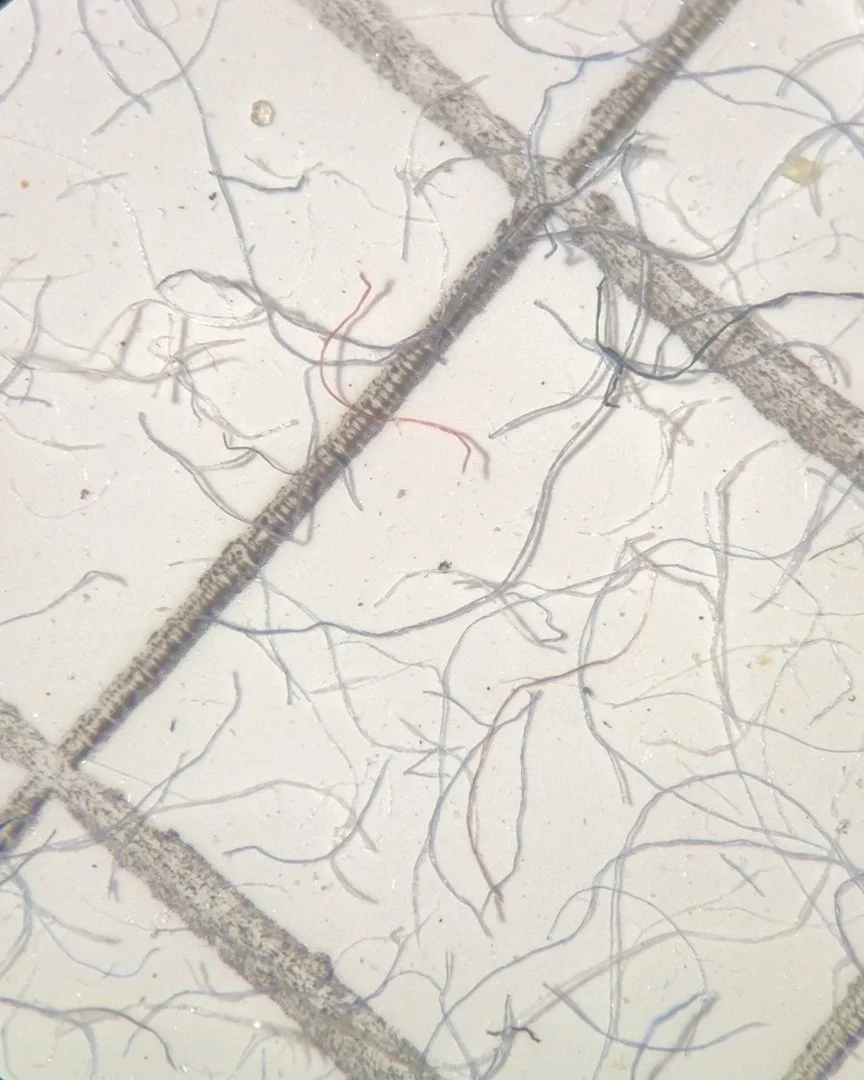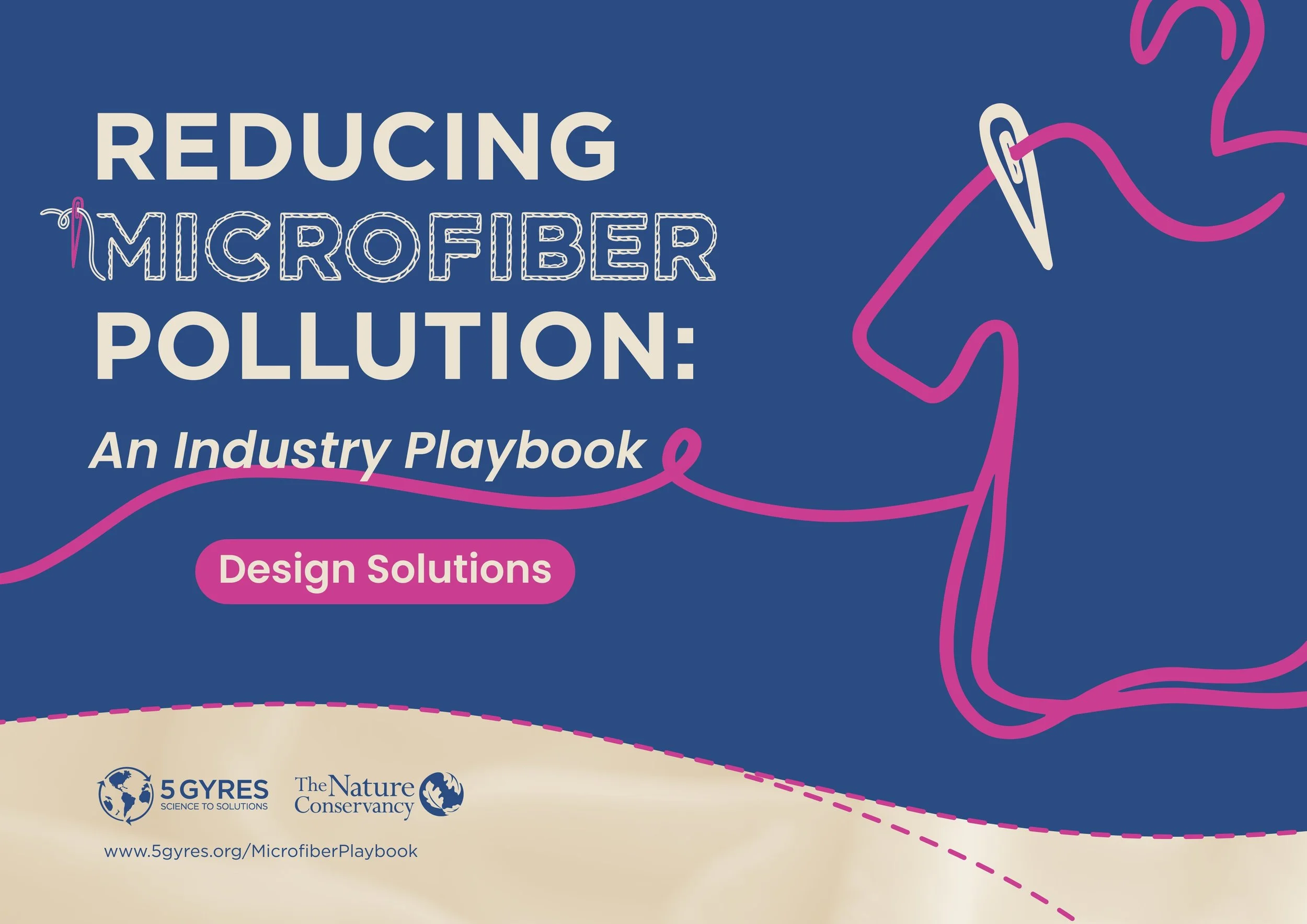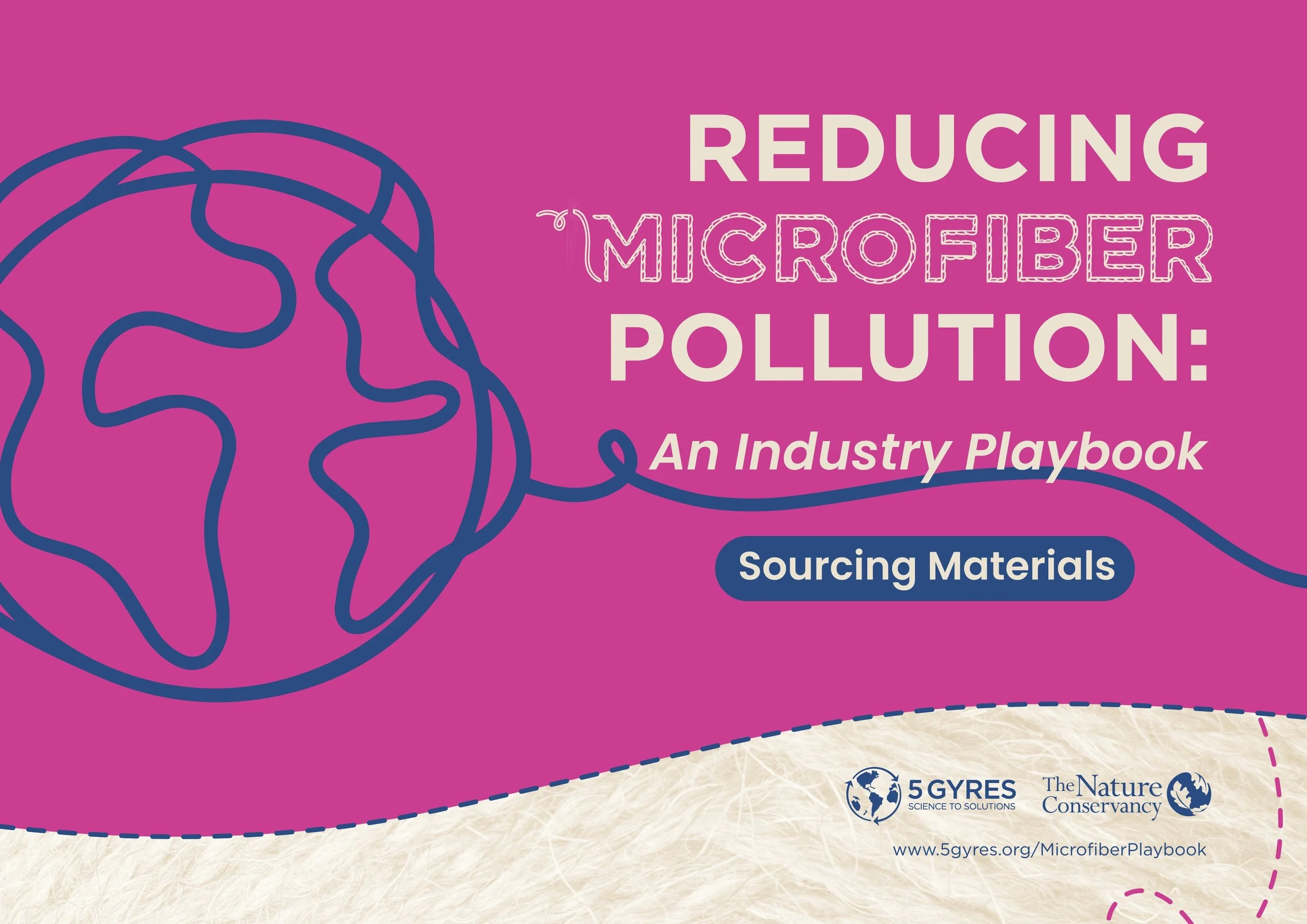MICROFIBER INDUSTRY PLAYBOOK
Microfibers Matter: The Big Picture
Microfiber shedding is a significant and under-addressed source of environmental pollution. These tiny particles break free from garments not only during washing, but also throughout production, wear, drying, and end-of-life stages, yet few regulatory tools currently focus on this source of anthropogenic pollution.
The science is evolving quickly. We know that microfiber emissions can occur throughout the product life cycle, and that interactions between fiber type, yarn structure, construction, finishing, and use-phase behaviors are complex. Sometimes these interactions are additive, leading to greater shedding than expected. Other times, they’re subtractive, where one improvement cancels out another. In other words: 1 + 1 might equal 3, or 0.5. Testing and collecting data are key to making holistic improvements.
We know enough to act now. Brands do not need to wait for perfect data or new regulations—there are proven strategies available today that reduce fiber loss and improve product quality.
Reducing Microfiber Pollution: An Industry Playbook, developed by The 5 Gyres Institute and The Nature Conservancy, offers accessible, general guidelines to help brands take the first steps in reducing microfiber emissions. They do not set reduction targets or recommend specific technologies, but point to resources that support action now.
Reducing Microfiber Pollution: An Industry Playbook
This series includes three audience-specific guides with practical strategies for brands. Each guide is designed to support implementation of easy wins—proven strategies that don’t require perfect data or regulatory pressure to begin. Each section also reflects what we know today, and can help teams build microfiber literacy for iterative improvements.
1: Design Solutions
For designers and developers, with fiber, yarn, and construction swaps.
2. Sourcing Materials
For sourcing professionals, with supplier engagement tools and material library suggestions.
3. Manufacturing Practices
For production teams, with filtration, washing, and finishing improvements.
How to Use the Playbook
These guides are intended to support practical decision-making for apparel brands, by equipping the right people with the right tools. They are modular and complementary—use them together, share with different teams, or adapt them to your organizational structure.
BENEFITS FOR BRANDS:
Reducing microfiber emissions isn’t just a sustainability imperative. Reducing fiber loss delivers clear business value:
Product performance: Fabrics that shed less are often more durable, more comfortable, and retain quality longer.
Brand equity: Aligns with consumer trust, sustainability storytelling, and reputational leadership.
Regulatory readiness: Positions brands ahead of incoming policies targeting microfiber shedding in textiles.
Operational efficiency: Reducing finishing steps like brushing, sanding, and napping can lower production costs.
MICROFIBER MITIGATION IS STRATEGIC:
While measurement tools are still catching up to the complexity of real-world shedding and impacts of microfibers in the environment, brands don’t need to wait. These guides offer solutions that are scientifically sound, cost-justifiable, and immediately actionable, helping brands to take action, communicate progress, and build momentum. As innovations emerge, evaluating their effectiveness is key to ensuring new solutions are science-backed, scalable, and ready for real-world impact.
Act now! Utilize the guides to reduce microfiber emissions across the value chain while improving product quality, operational efficiency, and customer experience.
Reducing Microfiber Pollution: An Industry Playbook was developed by The 5 Gyres Institute and The Nature Conservancy, following the WOVEN Microfiber Symposium in 2024. We’d like to acknowledge Lisa Erdle, Elisabeth Allen, Thomas Braun, Randy Harward, Jane Wood, Patrick Jurney, Sara Orofino for their contributions.






